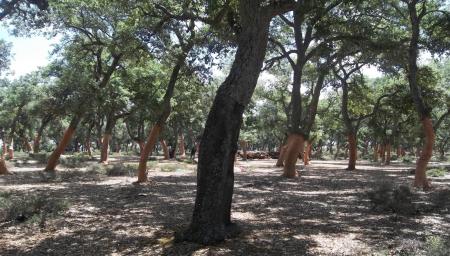
Objective:
- Defining a simple and reliable methodology for the quantitative evaluation of stacked cork at cork parks that will serve as a mean of controlling the quantity weighed previously,
- Create a database at each cork park to determine the weight of a cubic meter of cork reproduction.
- Train forest technicians to generalize this method on all cork parks in Tunisia from the 2020 harvest.
Context:
The cork oak in Tunisia occupies nearly 90,423 ha according to the result of the national forest and pastoral inventory published in 2010. Each year nearly 8000 ha of cork oak forest on average are subject of a potential harvest of 80,000 quintals of cork. The harvested cork is transported to undeveloped cork parks, and once it has been dried in the open air and reached equilibrium moisture, it is weighed by the regional forest services and then stacked. At the end, we obtain a total quantity in quintals for each cork park. In 2016, experts have shown that the quantity of cork stored and declared by the regional forest administration is overestimated in relation to the actual quantity.
Contacts:
Habib Kachouri, kachouri22h@yahoo.com, http://www.agriculture.tn (REF:Régie d'exploitation des forêts)
Mohamed Taher Elaieb, ayeb2002@yahoo.fr, http://www.inrgref.agrinet.tn